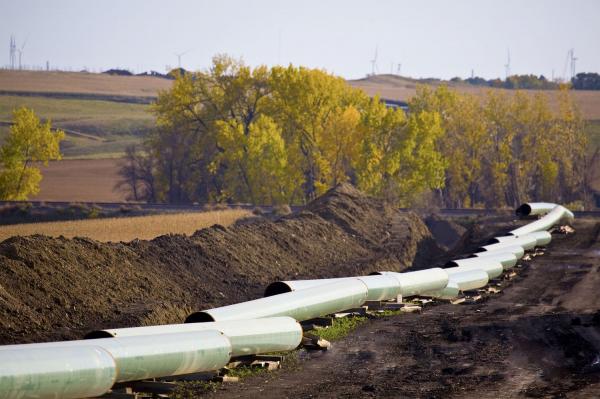
Nov. 17 (UPI) — A leak from the existing Keystone oil pipeline running from Canadian oil fields shows why an expansion shouldn’t be built, environmental groups said.
Pipeline company TransCanada said it took about 15 minutes to isolate a section of a pipeline in Marshall County, S.D., after a pressure drop was detected on the system Thursday morning. The drop in pressure was indicative of a leak and the company said about 5,000 barrels of oil were spilled.
The release came before Monday’s decision from Nebraska regulars on whether or not the company can go ahead with its plans for an extension, the Keystone XL oil pipeline. Kelly Martin, a campaign director with the Sierra Club, said TransCanada’s record suggests approving Keystone XL would be a questionable move.
“There is no such thing as a safe tar sands pipeline, and the only way to protect Nebraska communities from more tar sands spills is to say no to Keystone XL,” she said in a statement.
About 400 barrels of oil leaked near the Keystone pipeline in South Dakota last year. According to records from environmental group Greenpeace, companies proposing broader Canadian oil pipeline arteries have averaged about a spill a week over the last few years.
Todd Landmark, the emergency management director in Marshall County, was quoted by Aberdeen (South Dakota) News as saying the release made “a mess” of a rural field, but posed no danger to any waterways of public safety.
“TransCanada appreciates the collaborative support of local officials, emergency response personnel and commissioners in Marshall County, as well as the landowner who has given permission to access land for assessment, identification and clean-up activities,” the pipeline company said in its most recent update.
Spill volumes can vary over time. Last year’s estimate of 400 barrels was more than twice the initial estimate. The company closed the pipeline for about a week after discovering the release in early April 2016.
The section of the pipeline running from Alberta to Cushing, Okla., and to Patoka, Ill., is closed while TransCanada responds to Thursday’s incident.
TransCanada secured a long-awaited permit from the U.S. government this year to advance its cross-border Keystone XL project to the U.S. Gulf Coast. In addressing third quarter performance, the company said it had about 500,000 barrels of oil per day committed to the pipeline, which is about 60 percent of the total design capacity.






